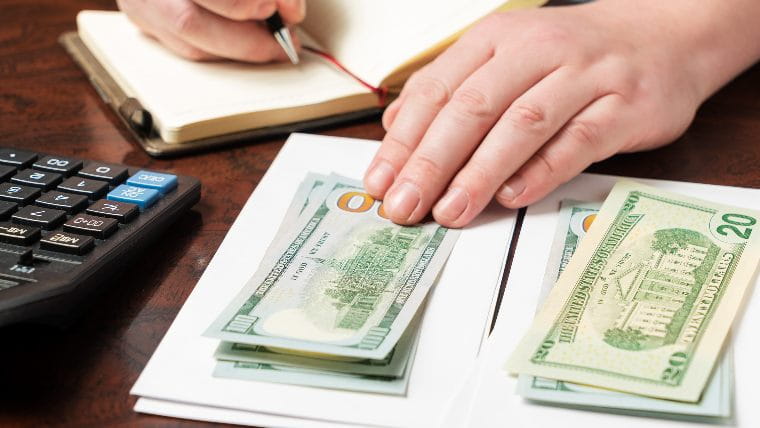How to Use the Envelope Budgeting Method

Creating a budget is one thing. Sticking to your budget is something else entirely. If you struggle to only spend the money you've budgeted where you've budgeted it, there's an especially low-fi solution that may work for you.
The envelope budgeting method is a traditional budgeting technique that involves allocating specific amounts of cash to different spending categories. It's a simple and straightforward way to ensure that you're only spending the money you've budgeted. If you're coming up short at the end of the month on a regular basis, the concepts behind envelope budgeting may work for you.
How does envelope budgeting work?
As the name implies, the method uses cash and envelopes to create and maintain a strict spending plan.
Determine categories
Start by identifying the various spending categories in your budget, such as groceries, dining out, entertainment, utilities, and so on. You can be as broad or as granular as you like. More categories means more restrictions, but less chance of coming up short.
Set budget limits for each category
Once you know your categories, you can assign a specific budget limit to each category. You take a look at all of your available spending and divide it into the various categories. To help make decisions, you can take it a step further and put those categories in priority order.
Ideally you never go over the limit in any one category, but if you do, you'll be forced to make the difference by taking funds from a category with a lower priority.
Withdraw your monthly budget in cash
If you've been living a cashless existence for a while now this may be a major shift. But the reason the envelope method works for so many people is that it makes your money more "real" and imposes clearer restrictions on your spending.
Where credit cards and debit cards can feel a little disconnected from our money, cash is much more immediate. Once it's gone, it's gone. And that kind of restriction can make it easier to avoid going over your budget.
Create an envelope for each category
The envelope method is very tactile. By putting the budgeted amount of cash into the assigned envelope, your budget stops being theoretical, and becomes extremely real.
"Here is my money, and here is how I'm going to spend it."
Spend from the envelopes
When you need to make a purchase within a specific category, use the cash from the corresponding envelope. Once the cash in an envelope is gone, that's it. No more spending in that category until the next cycle begins.
That said, if you run out of money in a high priority category like housing expenses or food, you may need to take money from a lower priority category to cover the difference. Avoid spending out of savings or creating debt whenever possible.
Track spending
Continually review your spending and track it against your stated budget and priorities. Regularly going over or under in a category may be a sign that you need to make some changes.
Do I have to use cash for the envelope method?
If you're not comfortable converting your paycheck into cash every month, you might be wondering if envelope budgeting works without physical money. Fortunately yes, you've got some digital options.
The most straightforward way is to create a digital budget (either a spreadsheet or an app), divide your expenses into categories, and update your spending in real time. It may not have quite the same impact as seeing your stack of dollar bills disappear, but up-to-date tracking of your spending against your budget can help keep you on track.
There are also apps like GoodBudget that are specifically designed to replicate the physical envelope method in a digital space.
If you're struggling to stick with your budget, something like the envelope method is a great way to stay honest with your money. But if overwhelming debt is a major reason why you're struggling, a better budget may not be enough. See if a nonprofit debt management plan from MMI is a good fit for your situation.
















